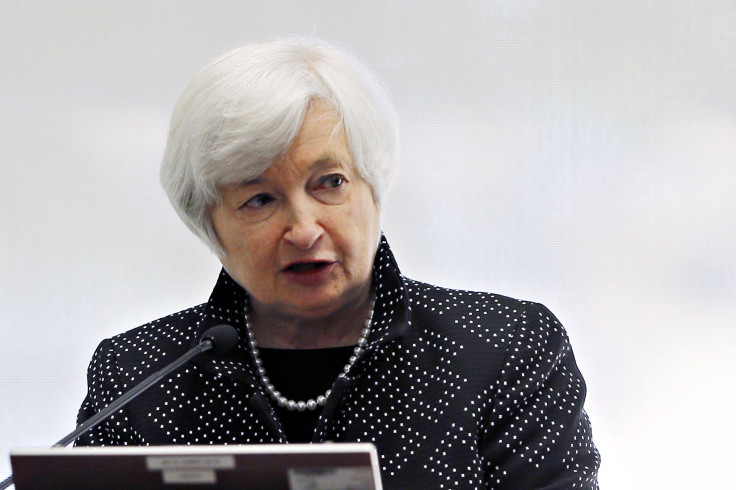US Federal Reserve Likely To Announce End Of Its Economic Stimulus Program; Currently Buying $15B In Assets Monthly

Wall Street pundits are predicting the U.S. Federal Reserve will announce an end to its latest stimulus program this week in the belief the American economy is strong enough to stand on its own. The Fed began buying certain assets in bulk during September 2008, as it dealt with the bankruptcy of Lehman Brothers Holdings Inc. on the one hand and the economic recession on the other hand. Shortly thereafter, it launched the first of three programs collectively known as quantitative easing, or QE (PDF).
The announcement could come Wednesday when the Federal Open Market Committee concludes a two-day meeting that also is expected to focus on the federal funds interest rate, which officially has been in a range between 0 percent and 0.25 percent since the end of 2008.
Currently, the Fed buys $15 billion in assets monthly, down from $85 billion in December. The worry is continuing the QE program, which began under former Fed Chairman Ben S. Bernanke, could generate fresh bubbles in the stock market, Agence France-Presse reported.
Bruce McCain, chief investment strategist for Key Private Bank in Cleveland, told CNNMoney the QE program gave investors optimism. “Now we're going to have to see whether investors can ride without training wheels,” McCain said.
J.J. Kinahan, chief strategist at TD Ameritrade, said Fed Chair Janet L. Yellen has indicated she believes the economy can withstand the Fed’s withdrawal. “Her job is not to make the stock market go up,” he told CNNMoney. “It’s to keep the economy stable.”
“The Fed message is we think we’ve done enough to generate momentum and keep the economy on the right track. Now we’re going to wait and see how things go,” Michael Gapen, a senior U.S. economist for Barclays PLC in New York and former Fed section chief in charge of monetary and financial markets analysis, told Bloomberg News.
Since September, the Fed has pumped about $3.5 trillion into the financial markets, most recently by its QE3 purchases of agency mortgage-backed securities and U.S. Treasury securities. Together, the three programs helped send the value of stocks, property and other assets higher than pre-recession levels. According to AFP, an end to QE3 will not lead to tightening since the Fed plans to roll over maturing assets until after interest rates go up, probably not before mid-2015.
During its first century of existence, the Fed has accumulated about $4.5 trillion in assets, which should provide a cushion against slowing growth in China and Europe, Bloomberg News said. Yellen has said it could take a decade to bring assets on the Fed’s balance sheet down to their historical level, the Wall Street Journal reported.
Scott Johnson of the Power Line blog quotes an unidentified professional investor as saying the only thing that saved the U.S. from a repeat of the Great Depression was the QE program.
“During the Depression, the Fed did nothing like QE and the Treasury wanted to force liquidation of excess assets and inventories and debts,” the investor said. “The result is economic cataclysm, especially in a leveraged economy with a fractional reserve banking system. … The primary criticism viz QE is that we are destroying the dollar and sowing the seeds of inflation. Maybe. But we are currently not inflating. At all.”
The investor also noted deflationary forces globally “are extraordinary.” However, steady inflation “is probably best for us all,” the investor concluded.
© Copyright IBTimes 2024. All rights reserved.






















